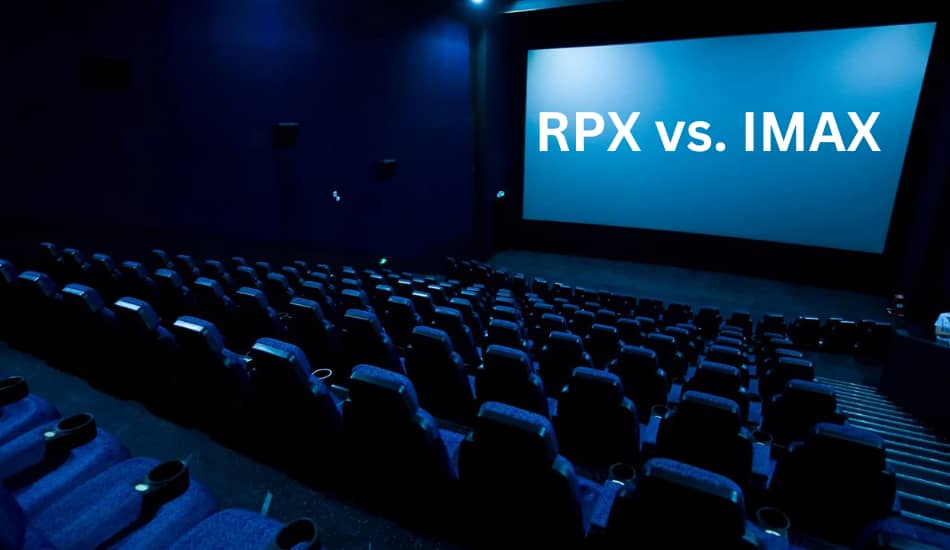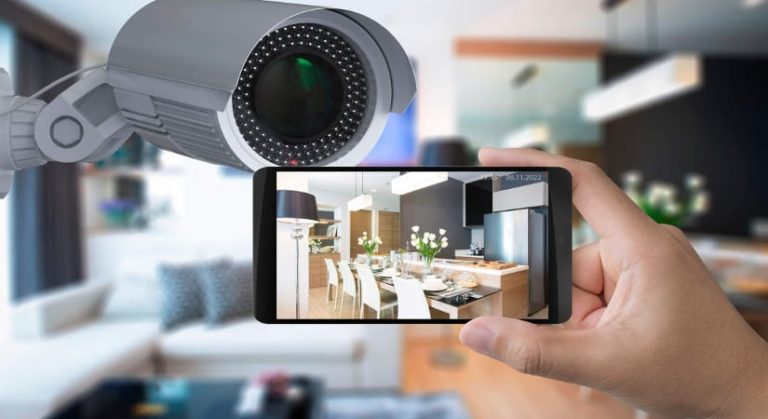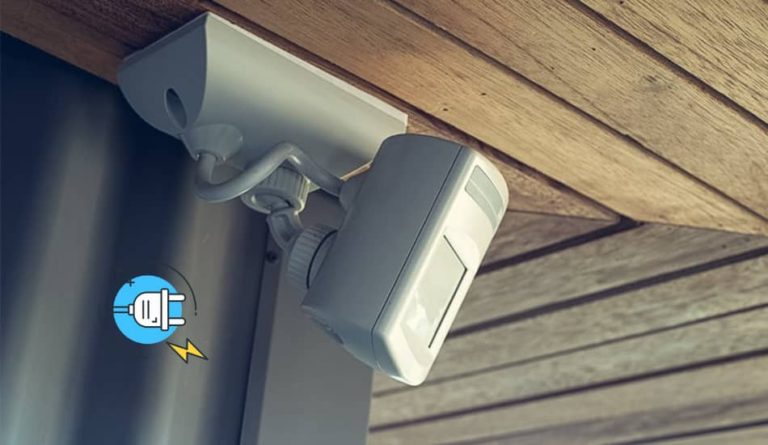RPX Vs. IMAX – The Difference Explained

When choosing between RPX and IMAX theaters, there are a few things to remember that can impact our viewing experience significantly, as both offer unique benefits. RPX (Regal Premium Experience) provides standard screenings with top-notch sound, sharp visuals, and luxurious seating, which is perfect for a comfortable movie experience.
On the other hand, IMAX is renowned for its immersive format, featuring much larger screens and higher resolution, which is ideal for blockbuster films where visual details matter the most. Understanding these differences can help us to choose the right format based on our comfort and visual impact.
What Is the Difference Between RPX and IMAX? RPX offers luxurious seating with immersive sound, while IMAX provides larger, curved screens with superior visual quality. IMAX is ideal for action-packed, visually stunning films, whereas RPX focuses on overall comfort and versatility for various movie formats.
Table of Contents
What is RPX?

RPX (Regal Premium Experience) is a widely used theater system for larger movie screens. Its standout features are its extraordinary sound effects and high-quality digital images with laser projectors.
When Regal introduced RPX, the goal was to stay competitive in the market, and they have succeeded in that mission. Today, RPX remains a popular choice in modern theaters.
Watching movies in RPX offers a premium feel regardless of the film’s format. While it suits large screens, it might not match the immersive level of more advanced formats.
Typically, RPX screens are 60 feet wide, but they can range from 45 to 70 feet in length. Currently, RPX supports VR movie formats, providing a superior experience compared to traditional theaters. Regal has strived to create an advanced theater environment that justifies the higher ticket prices.
Recently, RPX introduced 4k projectors that can display movies at 33,000 lumens brightness and have a contrast ratio of up to 1850:1.
The most notable feature of RPX is its immersive audio. The Aurus sound system is commonly used in Europe, especially the UK. However, in the US, Asia, and Africa, RPX prefers the Dolby sound system. Modern RPX screens can also run 3D movies, enhancing the viewing experience.
RPX theaters also feature premium interiors to complement the viewing experience. Regal has introduced leather seats and premium recliners in all its theaters, aiming to offer a luxurious movie-watching experience for everyone.
Overall, the RPX theater experience is above regular theaters, offering comfort and enhanced audiovisual quality.
Related Article: At What Height Should the TV Be Placed?
What is IMAX?

IMAX, short for “Image Maximum,” is one of today’s most advanced cinema systems. Known for its modern file formats, high-resolution movies, and advanced projectors, IMAX provides a full theater experience.
IMAX screens are much larger and have an aspect ratio of over 1.43:1 to 1.90:1, offering a more immersive experience with realistic images, bright colors, and an impressive audio system.
The IMAX Corporation was founded in 1967 by Roman Kroitor, Graeme Ferguson, and Robert Kerr. The first IMAX projection took place in Canada in the late 1960s and early 1970s. Its popularity soared due to its advanced movie-watching experience, and now IMAX systems are in theaters worldwide.
In 1998, the company introduced IMAX SR, a more affordable version, to make IMAX more accessible. IMAX theaters are known for their great sound system, impressive visuals, and premium recliner seating centered around the large and tall screens.
The large cameras, surround sound system, and digital dual laser projectors ensure each viewer is optimally positioned for the best experience.
Seats in IMAX theaters are arranged to provide the best view, and the viewing angle is expanded to 70 degrees, so we get the best perspective from any seat. The advanced sound system also ensures uniform sound distribution throughout the theater.
In an IMAX theater, we feel like we are part of the scene. IMAX screens are larger than conventional ones, enhancing the overall experience.
IMAX technology uses DMR (Digital Image Remastering) to offer stunning visuals. This proprietary process optimizes each movie frame to produce the clearest, sharpest picture with vivid colors.
Movies need to be shot with IMAX cameras to be compatible with IMAX. These cameras have the highest resolution to produce vivid and realistic images. They make the images crystal clear and suitable for larger screens. Different IMAX digital cameras are available, all wider than regular ones.
IMAX movies also come with the largest image frames, with one frame per 15 perforations on a film strip, compared to one frame per five perforations in regular cameras.
Due to this advanced technology, modern action, sci-fi movies, and documentaries are often made with IMAX cameras. These movies offer vivid images and realistic sound, making the viewing experience extraordinary.
Understanding the differences between RPX and IMAX can help us decide which format suits our preferences, ensuring we get the best movie experience.
RPX Vs. IMAX: Detailed Comparison
As movie enthusiasts, we always seek the best possible theater experience. Choosing between RPX and IMAX can significantly impact our viewing experience. Here is a table comparison to help us make the right decision.
| Criteria | RPX | IMAX |
|---|---|---|
| Comfort | It is great for action or sci-fi movies with more visual details and less dialogue. It is not the best for romantic movies or films emphasizing dialogue. | It is great for action or sci-fi movies with more visual details and less dialogue. It is not the best for romantic movies or films emphasizing dialogue. |
| Screen Size | Wider but smaller than IMAX, typically 40×60 feet. | Taller than RPX, with a curved screen and aspect ratios ranging from 1.90:1 to 1.45:1. |
| Technology | Uses digital projectors with flat screens. | Advanced IMAX technology with 4K and 2K laser projectors, more advanced than RPX. |
| Video Quality | Good video quality. | Vivid, crisp, and detailed pictures with 3D effects and immersive video quality. |
| Sound Quality | 7.1 channel audio system, often using Aurus or Dolby Digital for a personal theater-like experience. | 12-channel advanced audio system or Dolby Atmos with overhead speakers for immersive sound effects. |
| Movie Experience | Focuses on offering premium comfort. | Provides a premium and immersive experience with advanced technology and large screens. |
| Which is Better? | Suitable for every format, including 2D and 3D, and is budget-friendly. | Great for action, or sci-fi movies with more visual details and less dialogue. Not the best for romantic movies or films emphasizing dialogue. |
1. Comfort Experience
Comfort is the first thing that comes to mind when selecting a theater. In IMAX theaters, we enjoy premium seats with high backs, often leather-covered, ensuring a luxurious feel. Each seat is designed to provide an unobstructed view of the screen, enhancing our immersive experience regardless of where we sit.
On the other hand, RPX theaters prioritize our comfort by offering leatherback seats, many of which have extra padding. These wider seats come with headrests and high backs, ensuring maximum comfort. Additionally, each seat features a built-in speaker for an enhanced audio experience.
2. Technology
Regarding technology, IMAX stands out with its advanced laser projection and large curved screens that deliver exceptional picture quality. The curved screens create a 3D effect even for 2D movies, making the visuals clear, detailed, and immersive. IMAX theaters also use 3D and 4D technologies, with a 12-channel audio system featuring overhead speakers to provide a comprehensive sound experience.
However, IMAX movies must be shot with specialized IMAX cameras, which can be a limitation. These cameras are loud and only allow for short filming durations, making IMAX less suitable for quieter films.
Also, RPX theaters continuously innovate to offer the best viewing experience. They recently introduced 4K laser projectors with a ratio of 1870:1 and a brightness of 33,000 lumens. RPX screens support all formats, including 2D and 3D, making them versatile for any movie genre. This adaptability and ongoing technological advancements make RPX a strong contender in the theater market.
3. Screen Size
IMAX is designed for its massive, wall-to-wall curved screens, which provide a 3D effect even for 2D movies. These screens typically exceed 50 feet in height and can be up to 100 feet long, making them five to six times larger than conventional movie screens.
The largest IMAX screen is located in Leonberg, Germany. It measures 144 by 75 feet and weighs over 500 pounds (226 kg), offering an excellent visual experience.
While not as large as IMAX screens, RPX screens are still impressive. Depending on the theater size, they range from 45 to 70 feet in width and are flat rather than curved. RPX and IMAX screens are built with high-quality materials, ensuring a premium viewing experience.
4. Video Quality
For those who enjoy modern movies, video quality significantly impacts the viewing experience. With 4K and high-quality videos becoming the norm, it’s very important to choose a format with the best video quality.
Both RPX and IMAX have strengths and weaknesses in this area. If we’re excited about watching a 3D movie filled with action and stunning visuals, IMAX might be our best bet. IMAX is known for its vivid image details and optimized seating, which provides the best view from any angle and makes us feel closer to the screen.
Even for 2D movies, IMAX delivers superior video quality, as its curved screen offers a 3D-like effect. However, IMAX might not be ideal for movies where dialogue is more important than visual effects. For period dramas or romantic films, RPX could be a better choice.
RPX screens are also excellent for 3D movies, especially if we want to avoid eye strain. Additionally, RPX screens have lower brightness levels, which can be more comfortable for some viewers. However, certain 2D movies may not look as impressive on RPX screens due to their flat design and the distance from the viewers.
Despite these minor drawbacks, the overall viewing experience in RPX is quite similar to IMAX. Ultimately, the choice depends on the movie’s visual elements, genre, and preferences.
5. Sound Quality
When it comes to sound quality, IMAX emerges as the winner. Its 12-channel sound system provides a high-quality, impressive audio experience. In IMAX theaters, the sound system is positioned overhead, making us feel part of the movie scene.
This doesn’t mean RPX falls far behind. Modern RPX theaters use 7.1 audio channels. While Aurus audio is common in Europe, Dolby Atmos is more prevalent in other regions. To enhance the immersive experience, RPX theaters have speakers under each seat, creating individual sound bubbles. Some people love the vibrations from these speakers, while others might find them distracting.
6. Movie Experience
For a comprehensive movie experience, IMAX excels in providing an immersive environment. Its laser projectors, and curved screen make us feel like we’re part of the scene. However, the seats can be steep, and the crisp visuals are particularly striking.
Also, the RPX movie experience is all about premium comfort. RPX theaters feature reclining leather seats with ample legroom and high backrests. RPX theaters offer a premium version of modern theaters with added amenities. If we’re looking for a good experience, IMAX is usually the winner. But if we prefer premium seating, RPX might be the better choice.
7. Ticket Price
Budget is another important factor to consider. IMAX theater tickets are typically more expensive than conventional theater tickets.
The price range for RPX theaters can vary depending on the technology (such as 4K, 3D, or laser projectors) and the quality of the seats. As a result, RPX ticket prices can fluctuate, often differing by $2 to $6 compared to IMAX.
Ultimately, our choice depends on our personal taste and budget.
If you want to know more about RPX, watch this YouTube video here:
Similarities Between RPX and IMAX
When comparing RPX and IMAX, we find that both systems are more advanced than conventional theater setups, offering modern movie proprietary systems that enhance our viewing experience. Both provide immersive sound and improved visuals.
Both RPX and IMAX are continually updated with new technologies to ensure we, as movie fans, get the best possible in-theater experience. However, the similarities largely stop there.
IMAX vs. RPX: Which is Better?
IMAX might be the better choice if we enjoy stunning visuals combined with sound quality. IMAX is particularly ideal for 3D movies, action films, and any movie with impressive visual effects. However, it may not be the best option for movies that rely heavily on dialogue and subtle hints. With IMAX, we can expect a consistent experience no matter where we sit in the theater.
On the other hand, RPX theaters focus on providing a premium experience. While RPX offers immersive sound, its visual and audio quality may not match IMAX. However, RPX is versatile and can handle all movie formats, including 3D, 2D, and 4K.
This means we can enjoy movies regardless of their visual content, dialogue importance, or genre. The downside is that RPX theater seats are not optimized, and the screens are flat, leading to a better viewing experience for those in the front rows than those seated at the back. Ultimately, our choice depends on what we value most in a movie-watching experience.
Related Article: Using Adobe Flash Player On Smart TV
Final Thoughts
IMAX and RPX are premium movie proprietary systems but offer different experiences. RPX is about luxury seating and good sound effects, while IMAX provides stunning visuals and an exceptional sound experience throughout the theater.
In summary, RPX offers a better experience than regular theaters, but it falls slightly behind IMAX’s advanced technology. If we value luxury, RPX might be the winner; however, IMAX is likely the better choice if we seek an immersive movie experience.








